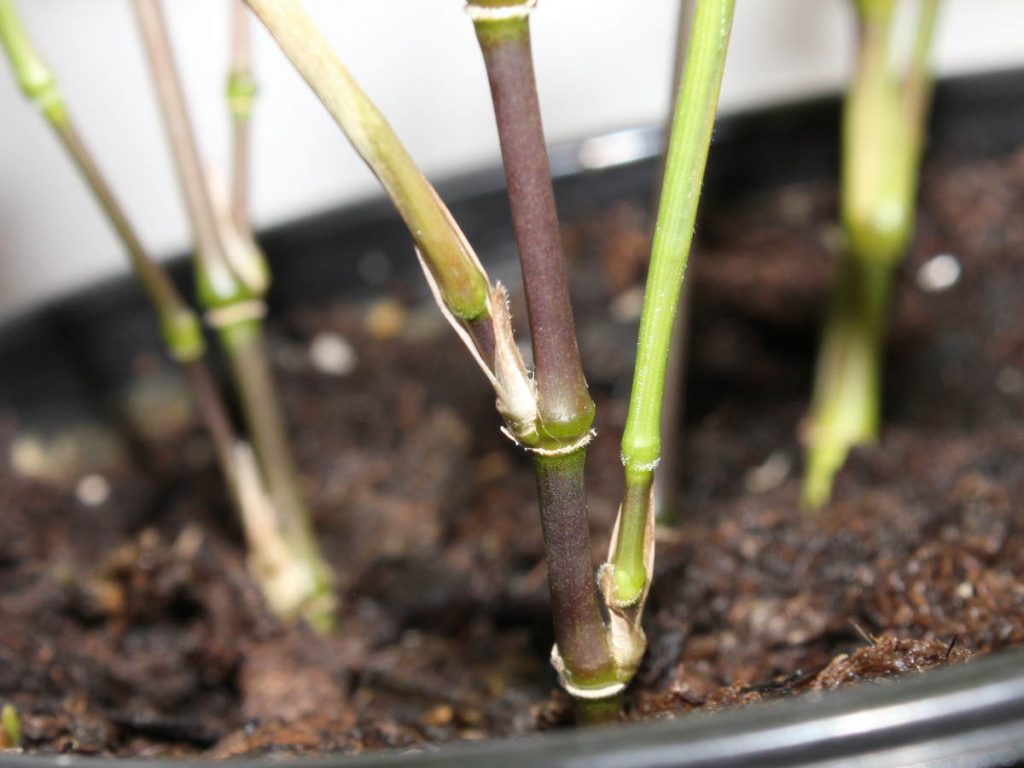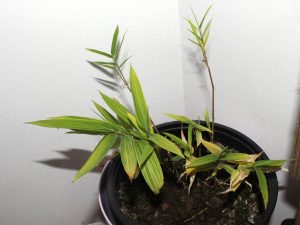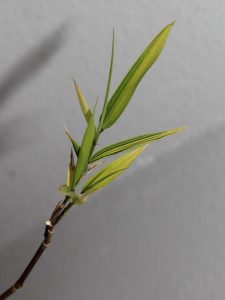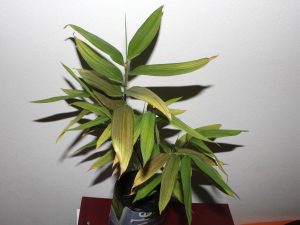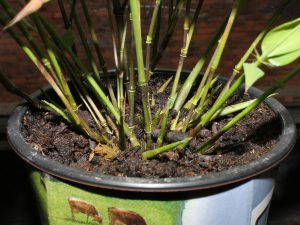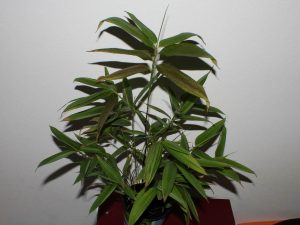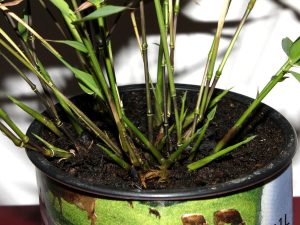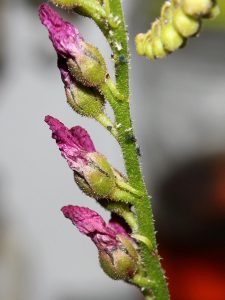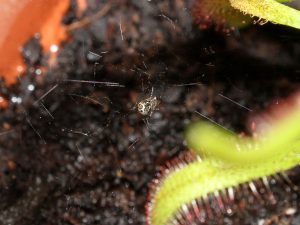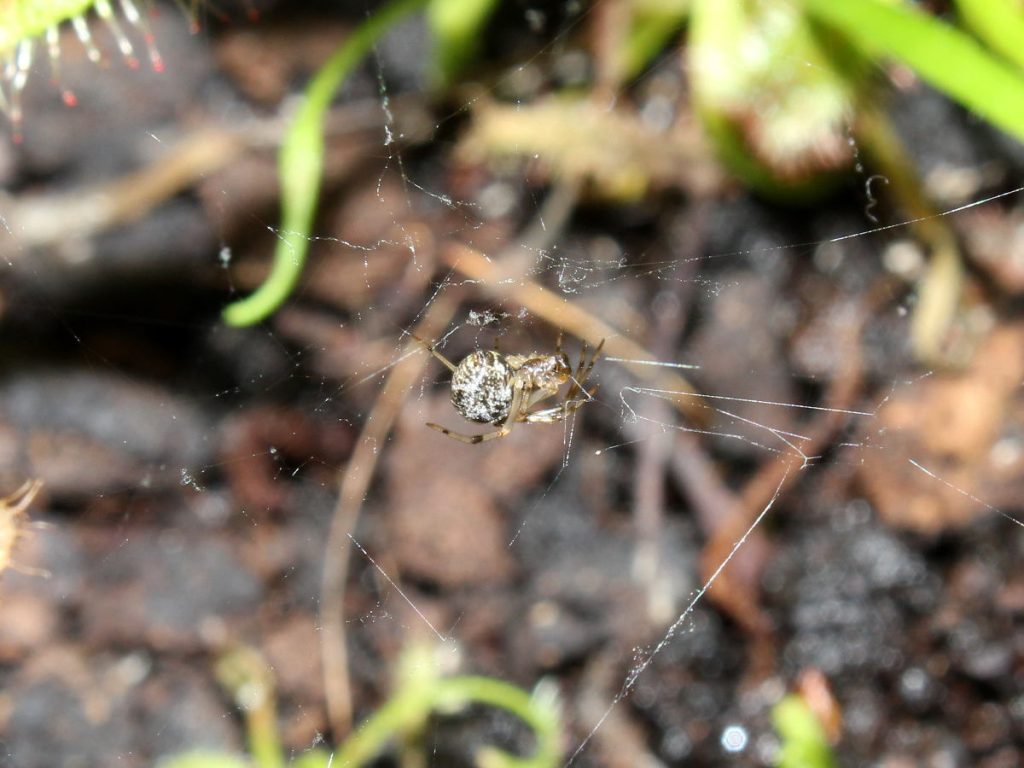Culm color of variegated Luteosulcata seedling (1)
Phyllostachys arcana ‘Luteosulcata’ & yellow sulcus
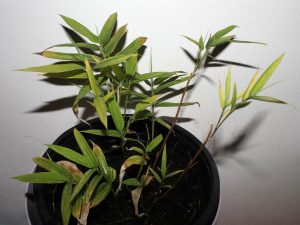
There was a debate recently on bambooweb forum regarding seeds sold as ‘Yellow groove’ seeds. It’s known that Phyllostachys aureosulcata (and other bamboos from that gang) flower from time to time, without resulting viable seed. Since it’s also not in gregarious flowering, there’s no way someone could get viable seeds of Yellow groove bamboo. However, there is a bamboo with similar characteristics (including zigzag and yellow striped sulcus) that is flowering recently and has given a lot of seeds already – Phyllostachys arcana ‘Luteosulcata’. Despite the fact that there are many growers, trying to get a Bamboo seedling with yellow sulcus, no such plant had been found so far.
The seedling that does show a bit different culm color
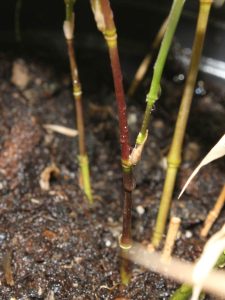
My first variegated Phyllostachys arcana ‘Luteosulcata’ seedling has a very pale leaf variegation. It doesn’t only have pale leaves, culms are also lacking green pigmentation. In early stages of seedling’s growth, I could see that culm color was different than any other seedling I’ve grown, including other variegated seedlings. As soon as young shoots loose their sheaths, the culm inside looks almost completely white to very light green. Within days, light exposure makes the shoot turn more and more red. It can turn into unbelievable red color, unlike I’ve seen on any other bamboo. It later fades out into yellow. Seedling is still in a very young phase (it actually lost some weight due to chain of wrong decisions I’ve made :)) which means it can change considerably as it matures. It may end up looking much greener further down the road. We will see …
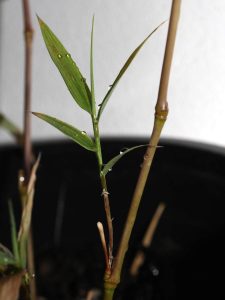
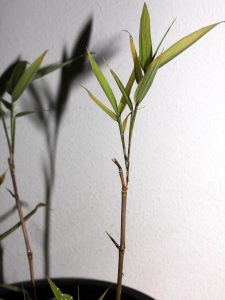
Culms of other Luteosulcata seedlings?
The seedlings I am growing have shown no culm stripings so far. They are young and will perhaps show some kind of culm variegation later, but there are slim chances. So far, there are no reports about a new generation seedling with culm variegation. My other seedlings do show some difference regarding strength of light induced color, though. All have dark green culms with red coloration that colors the sun exposed culms purple/brown. The second variegated seedling also has a bit less intense green culms, that do not turn red, instead, they look quite similar to majority of other seedlings – less intense purple green.
